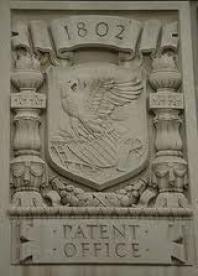Takeaway: An expert declaration supporting a petition must provide a fact-based analysis for the expert’s opinions. If it merely copies the wording of the petition, then the Board is likely to give it little or no weight.
In its Decision, the Board determined that Petitioner did not show there was a reasonable likelihood of establishing the unpatentability of the challenged claims (13-24 and 37-47) of the ’320 Patent, and therefore denied institution of inter partes review. The ’320 Patent relates to control interfaces for integrated circuits (“ICs”) and other devices, and discloses a single wire serial interface that may be used to control stand-alone power ICs and other devices.
The Board began with claim construction, stating that claims of an unexpired patent are construed with their broadest reasonable construction in light of the specification. Petitioner proposed a construction for the phrase “receiving a signal via a single input,” asserting that it should be construed as “receiving a signal encoded with clock pulses, which signal is the same signal encoding a low period that exceeds a predetermined timeout value.” Patent Owner stated that this is incorrect because it goes beyond the broadest reasonable interpretation of the phrase, which is that the signal is received via a single input. The Board agreed with Patent Owner.
The Board then turned to the single ground of unpatentability – that all challenged claims are obvious under 35 U.S.C. § 103 based on Loke in combination with Adlhoch and Enomoto. The Board first discussed whether the prior art discloses the requisite first circuit for receiving a signal via a single input of the IC. Petitioner acknowledged that Loke does not explicitly teach the first circuit, but relied on Enomoto for the disclosure. The Board was not persuaded that Enomoto compensates for the acknowledged deficiency in Loke because the successive counting and selection in Enomoto does not disclose or suggest progressively increasing count values during the accumulating of the count of clock pulses as required by the challenged claims. Further, the Board was not persuaded that Petitioner established a reason to combine Loke and Enomoto as proposed regarding the first circuit. Specifically, Petitioner relied upon its expert declaration, which used exactly the same wording as in the Petition, for the reason to combine. The Board found that this was entitled to little or no weight because it did not provide any facts, data, or analysis to support the stated opinion. Specifically, the expert did not explain how the teachings of the specific references could be combined, which combination(s) of elements in specific references would yield a predictable result, or how any specific combinations would operate or read on the asserted claims.
The Board next reviewed the limitation of a second circuit for mapping the count of encoded clock pulses into a corresponding one of plurality of control states for the core circuit. Petitioner again acknowledged that Loke does not explicitly disclose this limitation and relied on Enomoto. For the same reasons as above, the Board found that Enomoto does not cure this deficiency. The Board also again found that Petitioner did not provide a reason to combine, giving little or no weight to Petitioner’s expert’s declaration.
Next, the Board analyzed whether the third circuit for resetting the count of encoded clock pulses to zero in response to the received signal being low for a period that exceeds a predetermined timeout value is disclosed in the prior art. Petitioner again acknowledged that Loke does not explicitly teach the third circuit, but relied upon Adlhoch for this disclosure. Petitioner again relied upon its expert declaration to support the assertion that one of ordinary skill in the art would have combined Loke and Adlhoch. The Board again discredited the expert declaration for failing to provide any fact-based analysis to support this opinion.
Finally, the Board stated that Petitioner had not provided any arguments regarding the dependent claims that cure the deficiencies stated above. Therefore, the challenge as to those claims also failed.
Kinetic Technologies, Inc. v. Skyworks Solutions, Inc., IPR2014-00529
Paper 8: Decision Denying Institution of Inter Partes Review
Dated: September 23, 2014
Patent: 7,921,320 B2
Before: Glenn J. Perry, Scott A. Daniels, and Barry L. Grossman
Written by: Grossman
Related Proceedings: Skyworks Solutions, Inc. v. Kinetic Technologies, Inc., No. 1:13-cv-10655 (N.D. Cal.); Skyworks Solutions, Inc. v. Kinetic Technologies, Inc., No. 3:14-cv-00010 (N.D. Cal.); Reexamination Control No. 95/00,501; Advanced Analogic Technologies, Inc. v. Kinetic Technologies, Inc., No. 3:09-cv-01360 (N.D. Cal.); IPR2014-00530; IPR2014-00690



 i
i


